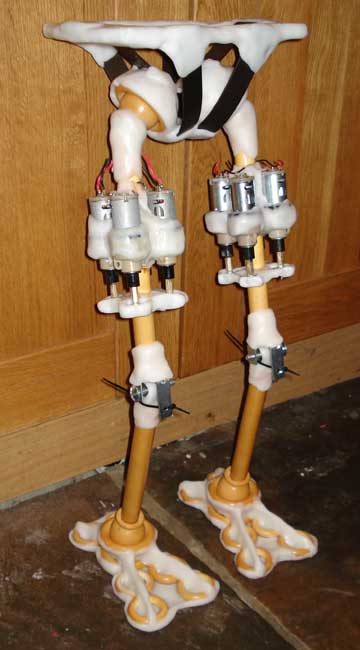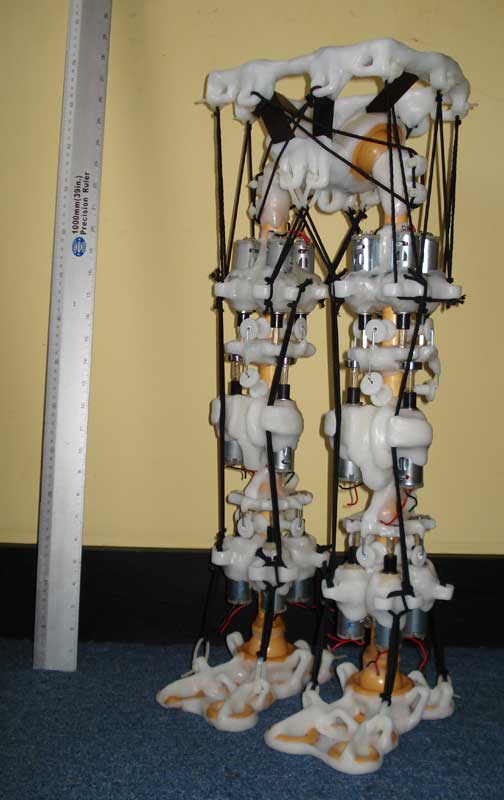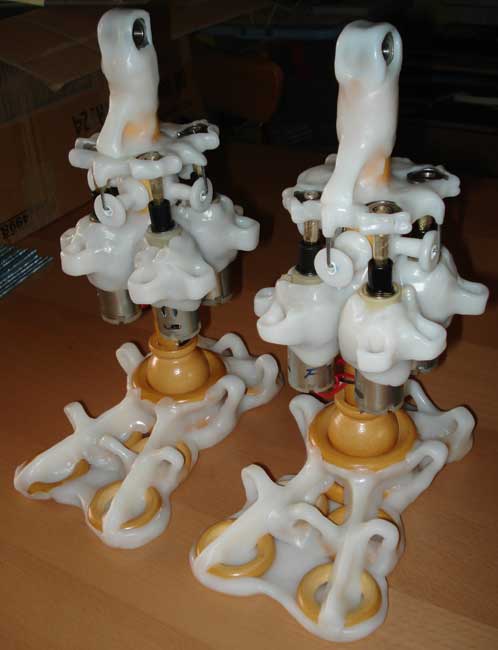I have never seen Polymorph before. It’s a plastic that can be melted in hot water, molded in your hands and when it dries it is rock hard! Using not much more than some Polymorph, some cordless screwdrivers and some wooden curtain rings this robot by XRobots was created.
" I constructed the pelvis part for the android first. This is made from aluminium strip material to make a frame which was then covered in polymorph. I used two different sized curtain rings to make ball sockets for the legs to plug into. The legs will have curtain rail ends attached to them which fit perfectly into the ball sockets, after a little sanding, to make sure they move around ok."





Permalink
Skynet anyone???
Permalink
Polymorph has been around for ages. Bought some on Ebay UK several years ago. You can do a lot with it. I used it to make custom car parts. 🙂
Permalink
I bought some polymorph from the UK electronics supplier called Maplins years ago.
I used some to fix my shower head to the wall because the old one broke off! Its very very strong when thick.
Only trouble is that because its temperature varies throughout the whole amorphous mass when hot, its not totally malleable or cooperative – It has a tendency to try to return to its original shape like elastic all the time, and it can take some time before it cools enough to take shape depending on what you’re doing so it needs holding in place until it cools.
I tried to create a flat plastic sheeting of the stuff (sheets are good to work with) by sandwidging some between two sheets of glass (to try to get it totally flat), works fine when you’re dealing with small amounts, but if you try to shape a lot of it in one go, it is VERY un-cooperative, heavily resisting your attempts to flatten it to anything resembling a sheet.
I’m sure if I had persisted, I would have figured out a way to do it better, but I had troubles even making a sheet 6 by 6 inches down to a few millimetres uniform thickness.
And because its surface area is increased when doing so, it loses its temperature quickly and partially solidifies when attempting it.
Aside from this, its great for general shaping for structural engineering provided you dont mind it looking a little like a child molded it into shape with their fingers!
Whatever you do, do NOT try shaping some with a blowtorch or even a heat gun – it lets off some really bad burning smells letting you know its badly poisonous. It doesnt cut or saw well either – as it gets warm when doing so, the point of cutting turns rubbery and gums up your saw. Again, I probably could have worked through these shortcomings figuring it out.
It goes transparent and very rubbery when soaked in hot water, and goes opaque milky white when cooled and solid, very interesting stuff!
Permalink
Permalink
That is some neat stuff. I have a digital laboratory hot plate that might work to make sheets.
Permalink
Permalink
Permalink
Permalink
Permalink
Permalink
Permalink
Permalink
Permalink
Permalink
Permalink
Permalink
Permalink
Permalink
Permalink
I don’t often comment on blogs but just needed to stop and say that I like yours.